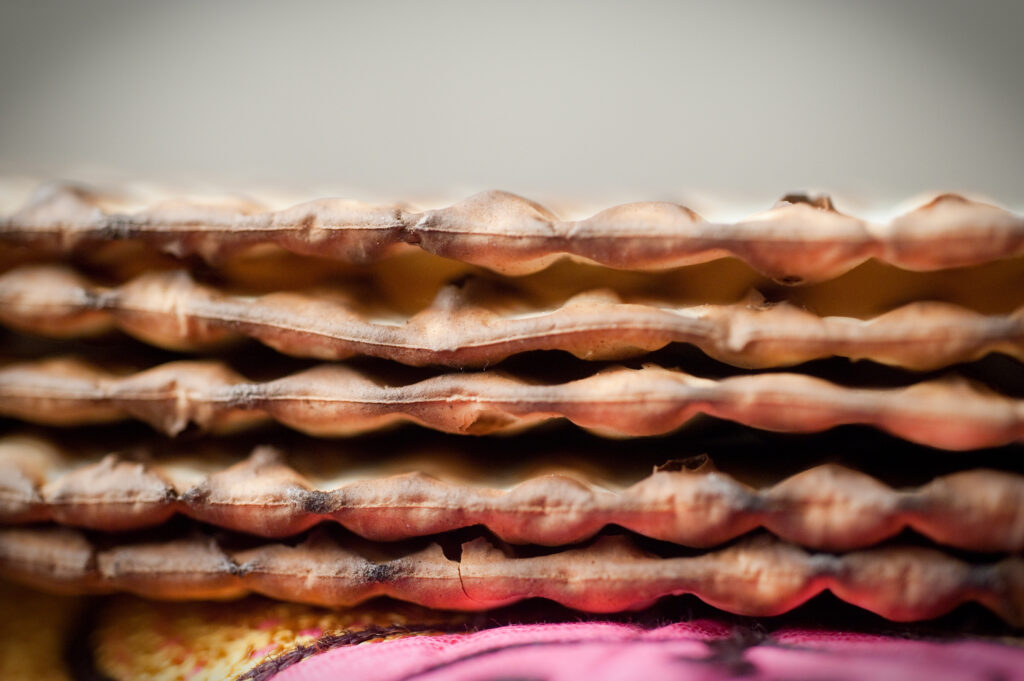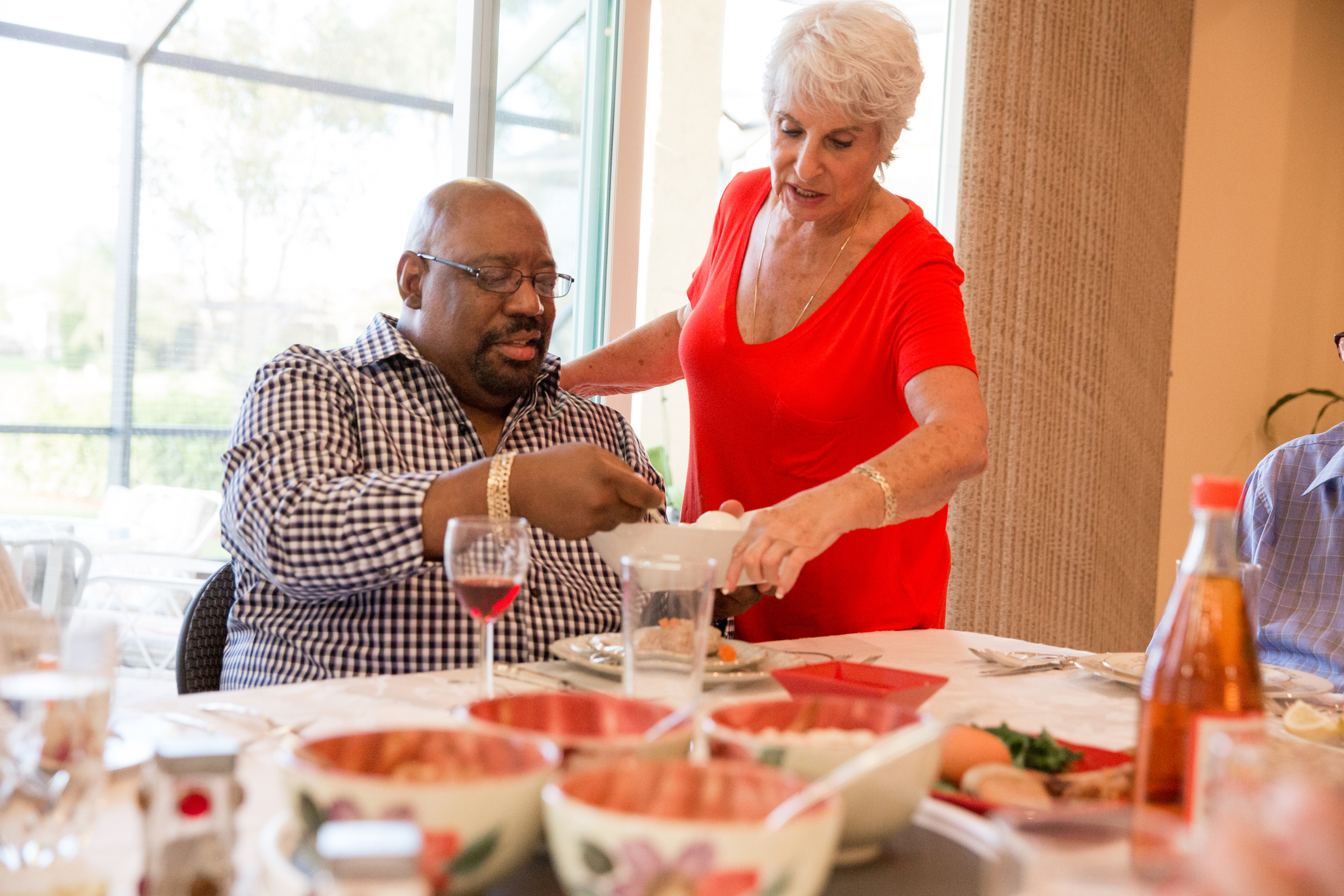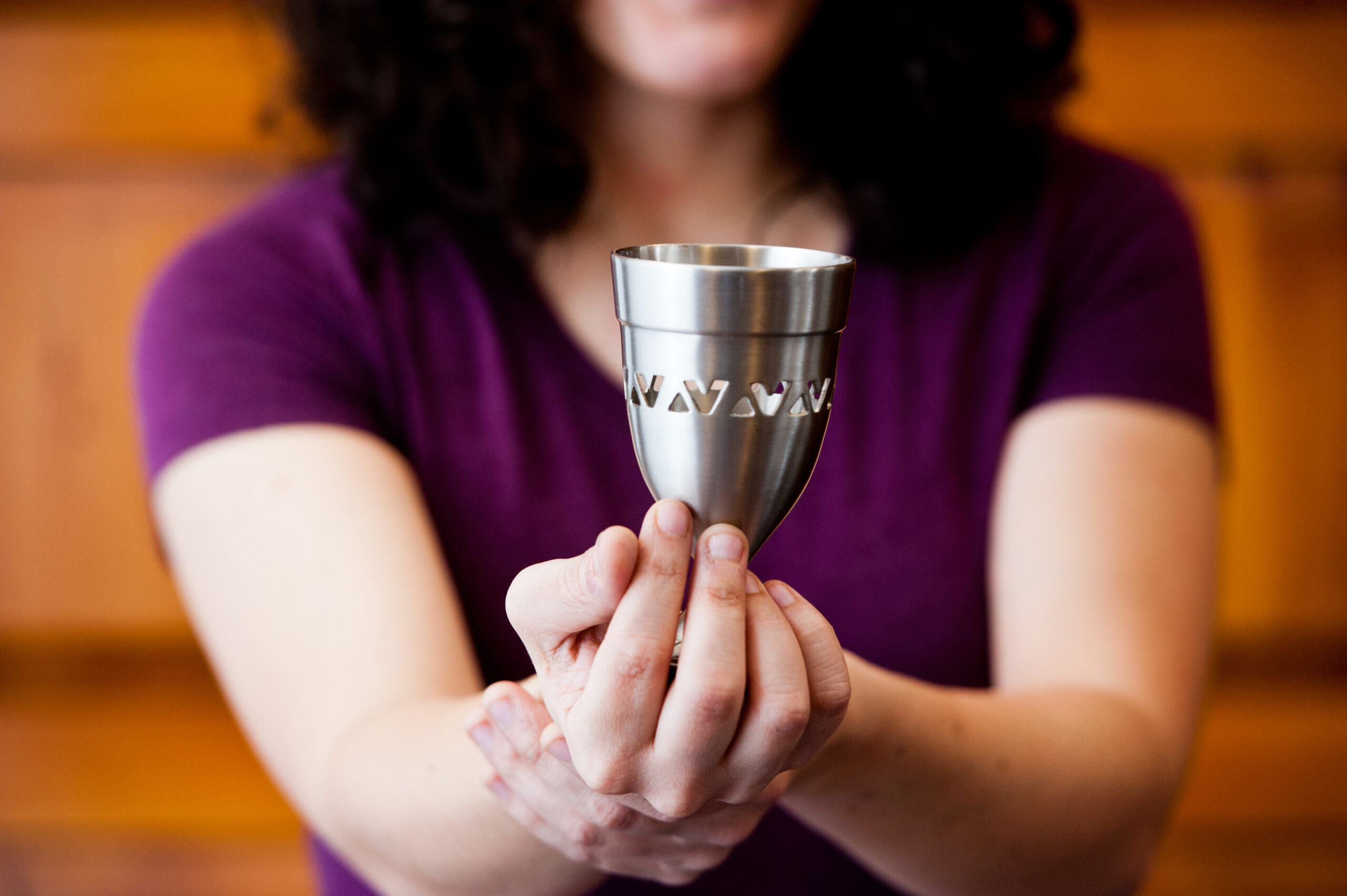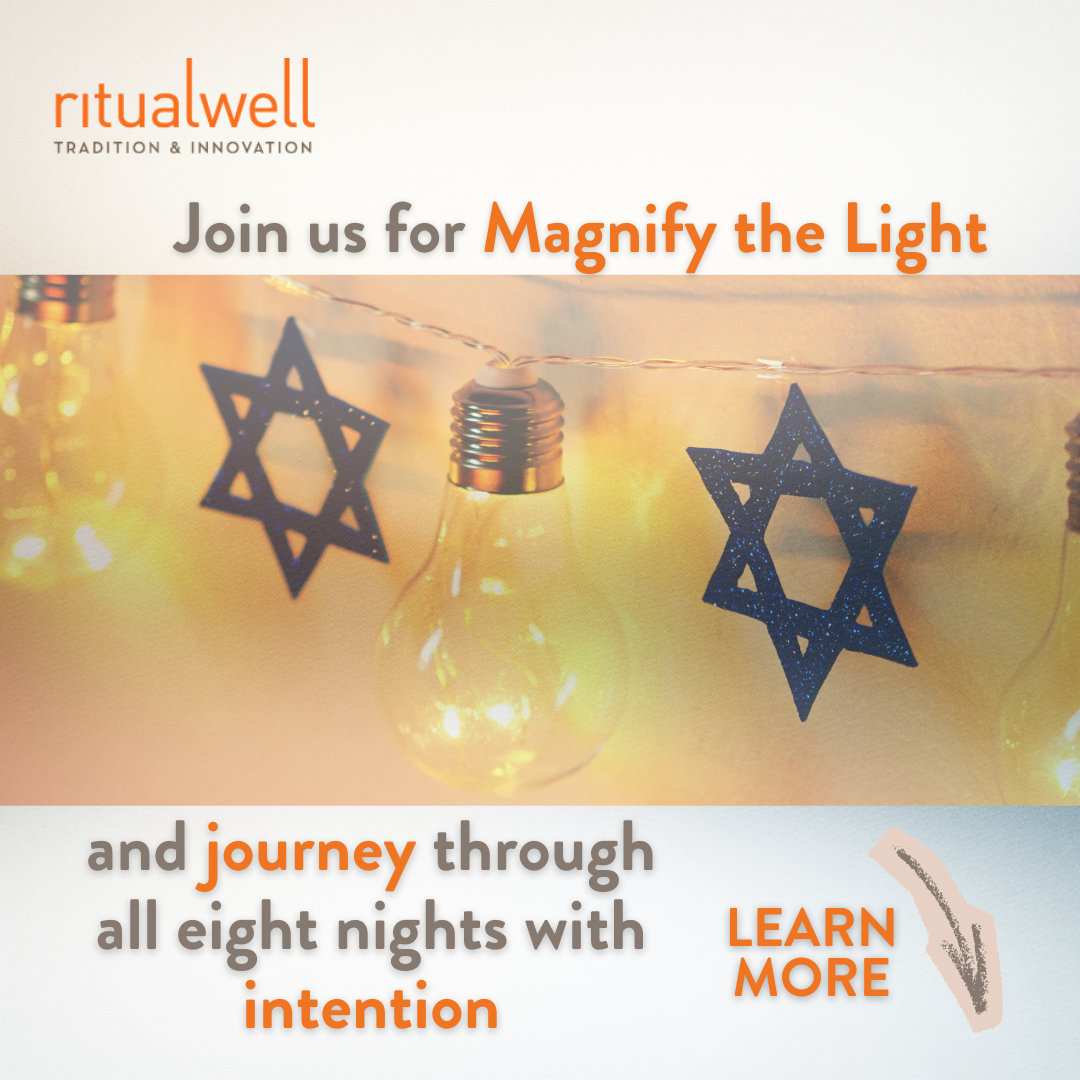The entire seder takes place between the two halves of a broken matzah.
We hold up three matzot, but we are going to focus on the one in between. The bottom matzah represents the earthly realm; the top is the heavenly realm. Below, there is pure physicality; above, there is pure spirit. The middle matzah represents the human story, straddling above and below. The role of the human is to be the bridge.
First, we acknowledge that the center does not hold: The middle matzah is broken. The larger half we put away for later – it is out of sight and out of mind. What is in our hands now is lachma anya – the bread of impoverishment. We recognize that our need for redemption is great. We are enslaved and dragged down.
But like the Israelites in Egypt, we are no longer stuck in the mud. We are standing in the doorway; we are on our way somewhere. We have a history and a future. We begin with this bread of poverty, but before we end our seder we will eat the other half, too, the bread of redemption. We tell the story of how we changed from people who were confined, held back, going nowhere, stuck in bricks and mortar, to a nation on its way, with a vision of a promised land. And at the very end, we finally act out the repair of our broken world. When we eat the afikomen, the pieces will get put back together – they will recombine inside us – they will become us.
But we can’t find the other half! It’s gone! And now we uncover the deepest secret of this ritual: Who is it that we must trust to bring the other half? The children. In the end, the most important piece, the point of it all, the future, our own redemption, is in the hands of the younger generation. We have no choice but to trust them to bring it to the table.













